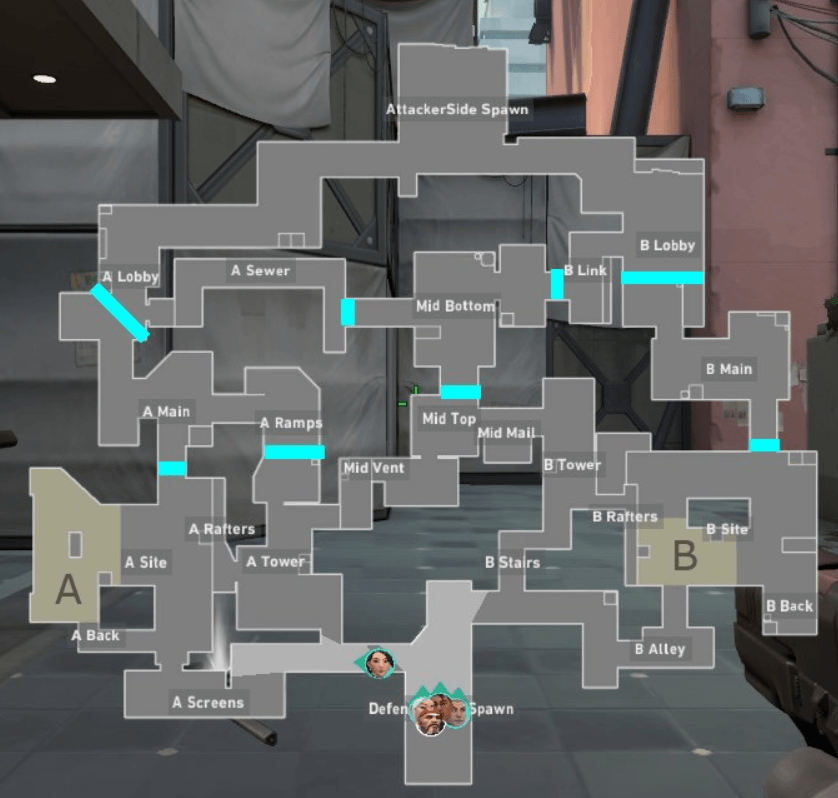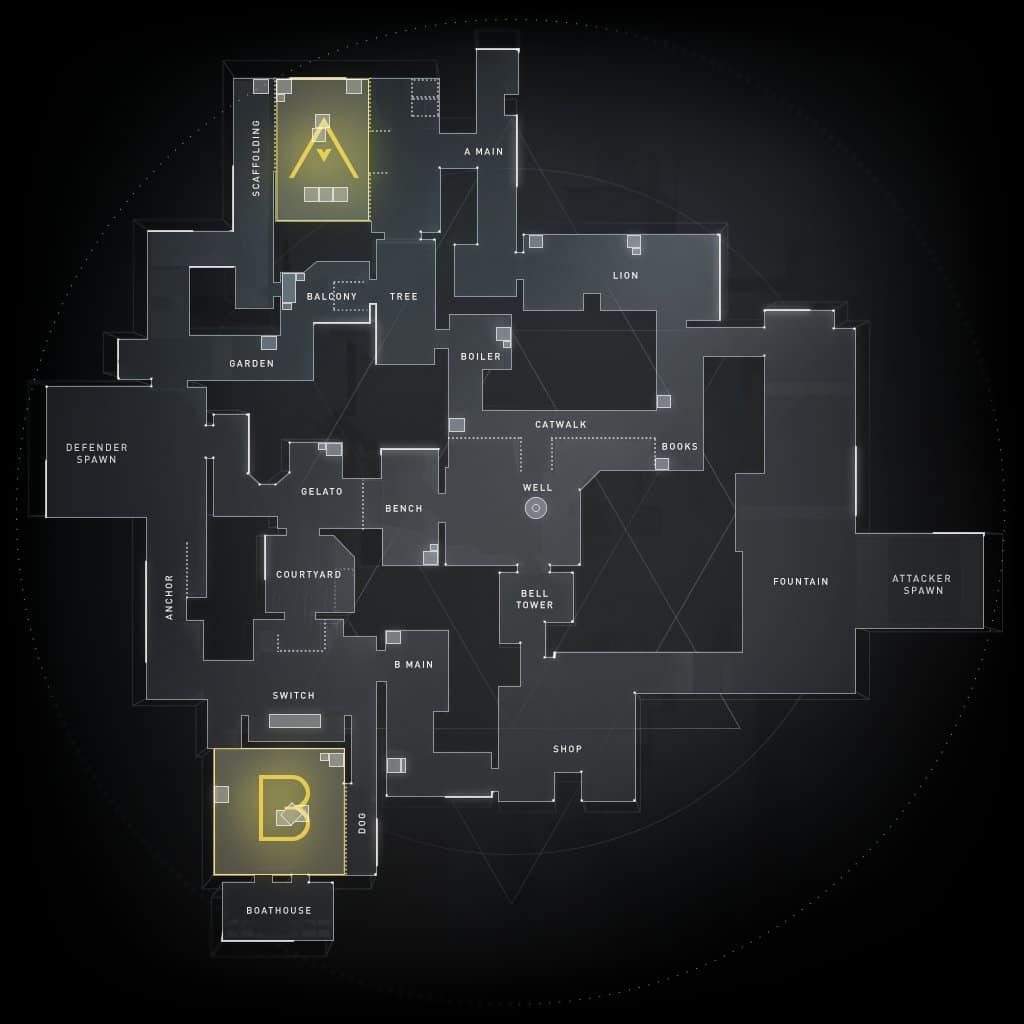News
Valorant: tips and features about the arenas
Valorant maps have their own peculiarities and are among the main highlights of the recent success of Riot Games‘ FPS. Altogether there are four: Bind, Haven, Split and Ascent. The first three are present since the Closed Beta, with the last being included only in the official launch of the game. In addition, there are other arenas designed for users to train skills, accuracy of shots, among other activities.
All maps are chosen at random both in unranked matches and in competitive mode. In fact, each one of them has emphatic individual characteristics. As an example, Bind has a portal system, Haven has three bombsites, Split has a rope mechanism and Ascent has doors that can be activated by a lever. So check out all the Valorant arenas.
Bind
It has a unique and different style from all other maps. Bind does not have a central area and contains two outlying bombsites. Denominated as A and B, respectively. In this case, both are located at a distance. They make the attackers have to choose one side or the other. However, there are portals in strategic locations. In order to facilitate faster rotations and provide a wide range of possibilities.

In Bind there are portals in strategic locations. (Image: Valorant)
Theoretically, the arena is more favorable for defense because bombs have few entrances. They are even reduced from the point of view of space. Furthermore, there are different positions for defenders to gain an advantage and consequently succeed in the rounds.
On the other hand, the portal system favors attackers and makes it possible to change the attack strategy. This change can be made in a matter of seconds, in addition to facilitating the opportunity to flank. In other words, in general, Bind is a balanced map that tends to rely on balance within matches.
/i.s3.glbimg.com/v1/AUTH_bc8228b6673f488aa253bbcb03c80ec5/internal_photos/bs/2020/g/8/9EWYsQQgWYrFpGZEsggQ/bind.png)
Bind is the only map to have a portal system. (Image: Riot Games)
Haven
The highlight for Haven is the inclusion of three bombsites: A, B and C, which bring an original dynamic to the matches. In fact, the map can be considered the trademark of Valorant. Because of being different from the others both in the different tactical eventualities and in the design used.
The map can be considered the trademark of Valorant. (Image: Valorant)This is an arena with the need to defend three different places. It also does not have long distances until the attackers arrive at the bombsites. The attack ends up being more benefited than the defense. That is, attackers have a greater chance of exploiting progression and confusing defenders more easily.
In general, defensive spins are more stuck and take longer, as it is necessary to wait for Spike to be planted. Therefore, it can be concluded that Haven is a more biased map for the attack. Although there is a prospect that the defense will be able to stand out and carry out precise counterattacks.
/i.s3.glbimg.com/v1/AUTH_bc8228b6673f488aa253bbcb03c80ec5/internal_photos/bs/2020/V/x/vHE7iPRwWA6Mz3glAUXQ/haven.png)
Haven consists of three bombsites. (Image: Riot Games)
Split
Generally speaking, Split is that typical FPS map. Two bombsites, A and B. The routes that favor duels in certain locations and a series of possibilities for players to make advances in the most varied ways. By the way, the arena in question has a raised central area that connects the two fronts available for planting Spike.

Split contains a number of possibilities for players to perform executions. (Image: Valorant)
Among its main features, it is possible to notice that the map is separated by a centralized region. Providing quick movements until the incursion to bombsites. Split is known for the presence of two ascending strings at three separate points in its geography. With a focus to connect bombs A and B to the middle of the arena.
With different control points at the top of each bombsite, for attackers to move forward in Split, it is necessary to climb and focus on elevated areas. Therefore, it is a much more focused map for the defense to benefit. Being able to take advantage of the ease with which it performs rotations.
/i.s3.glbimg.com/v1/AUTH_bc8228b6673f488aa253bbcb03c80ec5/internal_photos/bs/2020/V/q/mOhbr6Qb2sopJj1DmaEg/split.png)
Split has several elevations in its composition. (Image: Riot Games)
Ascent
Most recent of all maps, Ascent follows the Split line and also has two bombsites. They are identified as A and B, and the central area is the main location of their composition. In addition, there are variations of routes that can be used by both defenders and attackers. With different path opportunities, either by flanks or by corridors.

Different path opportunities in Ascent, either by flanks or by corridors. (Image: Valorant)
The big difference with Ascent compared to the others is the way the central part of the map is opened. Making it possible for the region to dominate both the defense and the attack. In addition, the arena has two doors located in each of the bombs. They can be activated by a lever. Both yield a momentary advantage, as they can be destroyed with some ease.
According to the scarce ways of entering bombs, in addition to the various alternatives that defenders have in having cover and places to stay hidden, Ascent is a map that favors defense rather than attack. If the attackers eventually gain control of the central part, the theoretical defensive advantage may fall.
/i.s3.glbimg.com/v1/AUTH_bc8228b6673f488aa253bbcb03c80ec5/internal_photos/bs/2020/o/L/pAnMe6QzKjAkFRVc6WJQ/ascent.png)
Ascent is the most recent map of Valorant. (Image: Riot Games)











